Radiantec has one of the largest selections of heating tubes in the industry
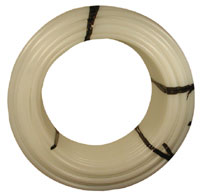
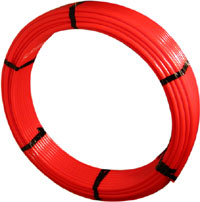
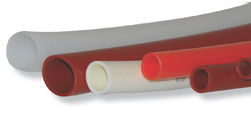
No two projects are exactly the same and no one tube is ideal for all situations. Radiantec carries a broad product selection of heating tubes in order to allow the customer to make the best possible choice of heat exchanger tubing for his or her project. The important factors in tubing selection are listed below. Click here to learn about the benefits of an engineered tubing.
As always, your Radiantec technician is ready to help you with this important aspect of your project.
Radiant tubing should run at the lowest possible temperatures
for reasons of safety, efficiency and long service life.
- Material – In most cases, the radiant heating tubes are built right into the structure of the building that is to be heated. The radiant heating tube should be of very high quality and should last the life of the building. It is not a good idea to skimp on cost or quality.
- Size – As a general rule, the radiant heating tube should be as large as possible. A larger tube puts out more heat than a smaller tube. It is easier for the pump and more efficient to pass the warm water through a larger tube (less friction losses and less pump work). You can have a longer length of tube if the tubing is larger and that may save on fittings and manifolds. One large tube may do the work of two smaller tubes and that could save on labor and supports.
- Wall thickness – A thicker wall will have higher temperature and pressure ratings and can be more durable. However, a thicker wall will put out less heat and will have to run at a higher temperature. The higher temperature requirement may take away all of the other benefits. (Lower temperatures are better for everything, including efficiency, longevity, safety, and comfort.) Let Radiantec help you decide. The tubing should have a reasonable amount of “over design” but not a ridiculous amount. Exterior “snow melting” tubes need to be more durable but most radiant installations are not subject to abuse in service. Copper tubing and other metals will “wear away” over time and should be thicker to begin with. Pex tubing is much less likely to wear away in use because of its molecular composition. A thinner wall is more likely to kink when bending and may require more care during installation or may require a design with wider bending curves.
- Durability – Snow melting projects require increased durability because large temperature changes cause expansion and contraction, and the tubing may move about in an aggregate like sand or gravel. Tubing placed within a proper concrete floor is not going to move about. Expansion and contraction stresses are accommodated by changes in the thickness of the tubing wall. Tubing placed within joist spaces should have adequate room for expansion and contraction without wearing the tubing.
- Heating output – Tubing size, amount of tubing (or tube spacing), wall thickness, tubing material, fluid temperature within the tubing and the material that the tubing is placed within all have an affect on heating output. You can vary all of these factors to get the best possible result for your application. For example, you can put in a lot of tubing and run at low temperatures, or you can install less tubing and operate at higher temperatures.
- Electrical energy cost – This is a very important factor that unfortunately does not always get the attention that it deserves. It takes electricity and money to move warm water through heating tubes and some systems have a lot of tubes. Some systems use much more electricity to do the same job as others. In general, a system with more tubes, larger tubes and tubes with a thinner wall will perform its heating function with less parasitic electrical consumption. Radiantec understands and cares about this very important efficiency factor and will help you get the best possible result.
- Ease of installation – Some projects and practices are easier to install than others. You must consider the effect of the tubing on the ease of installation. A difficult crawl space installation is very different from a simple concrete slab project and the tubing selection must reflect this reality. In general, however, use the largest tube size that you can. A smaller tube with a thicker wall will be easier to install than a larger tube with a thinner wall. The smaller tube will not kink as readily as the larger one. In a cramped retrofit crawl space, this difference may be very important. In a medium sized concrete slab floor, there may be no difference at all. Keep in mind that if you select smaller tubing, you must use more of it to get the same result. Radiantec does not favor rubber tubing because of its uncertain service life and unfavorable thermal properties. We have only used it where it was readily accessible for replacement and where its flexibility was absolutely essential. The project was an old school bus that was converted to a travel camper. Heating energy was free and great flexibility was needed.
- Cost – Larger tubes are often economical because there can be savings in fittings, aluminum plates, fasteners, tie downs and labor.
- Potability – If your heating tubes are connected to or a part of the potable drinking water, your heating tubes need to be potable also. All Radiantec tubings are safe to drink from, but some code jurisdictions require specific markings on potable tubes.
- Oxygen diffusion – Some tubes come with an “oxygen diffusion barrier”. The reason for this feature is because some system components are not tolerant of oxygen in the heating fluid. The oxygen diffusion barrier on the tubing will greatly reduce the amount of oxygen that gets into the heating fluid. A system that uses a domestic water heater as the heat source does not need an oxygen barrier. Some boiler manufacturers will not honor their warranties unless oxygen barrier tubing is used. In some cases, the oxygen barrier has been implicated in excessive expansion and contraction noise as the heating system comes on and off.
- Code compliance – Some code jurisdictions have specific requirements about what tubings they will accept. It is always best to check before you install. In some cases, you may be granted a waiver if you can demonstrate equivalency. Radiantec will help you.
Click Here to learn more about the benefits of an engineered tubing.
There are several approved ways to make PEX tubing and Radiantec does not see any great difference between them. Nevertheless, Radiantec has chosen to use the electron beam method (Pex-C) because we feel that the results are more consistent and reliable.
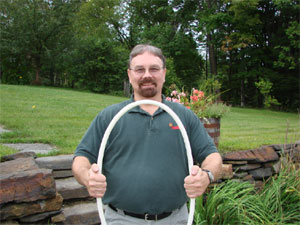
Radiantec tubings can be bent quite sharply, but we do not recommend the practice.
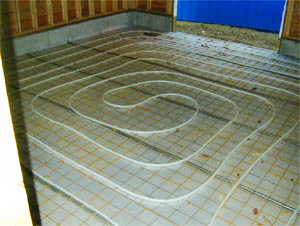
Sharp bends strain the material unnecessarily and increase pump work. Design for gentle bends.
The following graph may be helpful in making your selection and do not hesitate to call us.
| Tubing | Heat Output | Bending Diameter | Oxygen Barrier | Overall Cost | Potability | Code Acceptance |
|---|---|---|---|---|---|---|
| 3/8″ PEX | Limited | Very Good | Not Available | High | Yes | Good |
| 7/8″ Poly | Very Good | 24″ | Not Available | Lowest | Yes | Limited |
| 7/8″ PEX | Very Good | 24″ | Not Available | Low | Yes | Limited |
| 1/2″ PEX | Limited | 12″ | Available | Medium | Yes | Very Good |
| 5/8″ PEX | Very Good | 16″ | Not Available | Medium | Yes | Good |
Radiantec has a large supply of pumps.
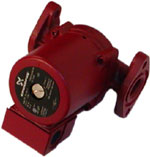
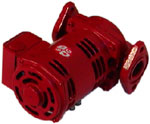
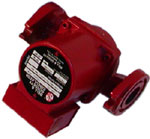
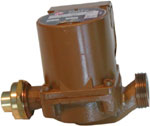
Many boilers come with a pump and one size is supposed to fit all. It is better if the pump is properly sized to the workload by someone who knows how to do it. Your system will run better. There will be less wear and tear on the system and you will have less parasitic electric energy consumption. This can be a big factor in your overall cost of operation. Your Radiantec technician will help you with your selection.
